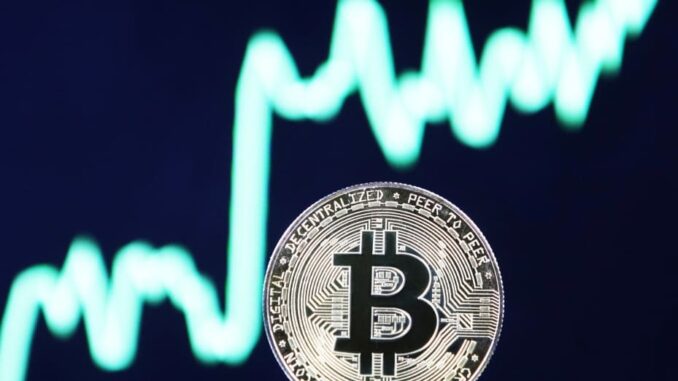
Non-fungible tokens (NFTs) have taken the digital world by storm, transforming the way we perceive and value digital assets. From digital art and collectibles to gaming assets and virtual real estate, NFTs have unleashed a wave of creativity and innovation, creating new opportunities for creators, collectors, and investors alike. In this article, we will explore the booming market for NFTs, examine key trends and developments, and discuss the potential for NFTs to disrupt traditional industries.
Understanding NFTs: Uniqueness in the Digital Realm
At its core, a non-fungible token (NFT) is a unique digital asset that is stored on a blockchain, making it tamper-proof, transparent, and easily verifiable. Unlike cryptocurrencies such as Bitcoin or Ethereum, which are fungible and can be exchanged on a one-to-one basis, each NFT has unique properties and cannot be replicated or exchanged for an identical token. This uniqueness is what gives NFTs their intrinsic value and appeal to collectors and enthusiasts.
Key Characteristics of NFTs:
- Uniqueness: Each NFT is one-of-a-kind, with distinct attributes and characteristics that differentiate it from other tokens.
- Ownership: NFTs are owned and controlled by individuals through cryptographic keys, allowing for transparent and secure ownership verification.
- Interoperability: NFTs can be bought, sold, and traded across different platforms and marketplaces, enabling seamless interoperability and liquidity.
- Programmability: Smart contracts embedded within NFTs enable programmable functionality, such as royalties, licenses, and access control, providing creators with greater control over their intellectual property.
Booming Market Trends: Exploring NFT Use Cases
The NFT market has experienced explosive growth in recent years, driven by a diverse range of use cases and applications. Here are some of the key trends shaping the NFT landscape:
1. Digital Art and Collectibles:
One of the most prominent use cases for NFTs is in the realm of digital art and collectibles. Artists and creators are leveraging NFTs to tokenize their artwork, enabling them to sell and monetize their creations directly to collectors without the need for intermediaries. Platforms like OpenSea, Rarible, and SuperRare have emerged as leading marketplaces for buying, selling, and trading digital art NFTs, with some artworks fetching millions of dollars in auctions.
2. Gaming Assets and Virtual Real Estate:
NFTs are also disrupting the gaming industry, allowing players to own, trade, and monetize in-game assets such as skins, avatars, and virtual real estate. Games like Decentraland, Axie Infinity, and CryptoKitties have pioneered the concept of blockchain-based gaming economies, where players can buy, sell, and breed NFTs to generate income and create unique gaming experiences.
3. Music and Entertainment:
Musicians, entertainers, and content creators are exploring the potential of NFTs to monetize their digital content and engage with fans in new ways. NFTs can represent ownership rights to music albums, concert tickets, exclusive merchandise, and even virtual meet-and-greets, providing artists with alternative revenue streams and fostering closer connections with their audience.
4. Sports Memorabilia and Trading Cards:
NFTs are also making waves in the world of sports memorabilia and trading cards, allowing fans to own and trade digital collectibles representing iconic moments, players, and teams. Sports leagues and organizations are partnering with blockchain platforms to tokenize memorabilia, create digital trading card collections, and engage fans through NFT-based experiences.
Potential for Disruption: NFTs Beyond the Digital Realm
Beyond their current applications, NFTs have the potential to disrupt traditional industries and unlock new possibilities for innovation and creativity. Here are some areas where NFTs could have a transformative impact:
1. Real Estate and Property Ownership:
NFTs could revolutionize the real estate industry by enabling fractional ownership, tokenizing property assets, and streamlining property transactions. Smart contracts embedded within NFTs could automate rental agreements, property management, and revenue sharing, making real estate investments more accessible and efficient.
2. Supply Chain and Logistics:
NFTs can enhance transparency and traceability in supply chains by tokenizing physical assets, verifying authenticity, and tracking provenance. By recording every step of a product’s journey on a blockchain, NFTs can help prevent counterfeiting, ensure product quality, and improve supply chain efficiency.
3. Intellectual Property and Licensing:
NFTs offer a new paradigm for managing intellectual property rights, licensing agreements, and digital content distribution. Creators can use NFTs to tokenize their works, establish ownership rights, and receive royalties automatically whenever their content is used or sold, reducing reliance on intermediaries and improving transparency in the creative industries.
4. Education and Certification:
NFTs could transform the education and certification landscape by providing verifiable credentials, diplomas, and certifications on a blockchain. Students and professionals could use NFTs to showcase their skills, qualifications, and achievements, enhancing trust and credibility in the job market.
Conclusion: Embracing the Future of Digital Ownership
The rise of NFTs represents a fundamental shift in how we perceive, value, and interact with digital assets. By combining blockchain technology with unique digital content, NFTs have unlocked new avenues for expression, ownership, and commerce, ushering in a new era of digital ownership and creativity. As the NFT market continues to evolve and mature, it holds the potential to reshape industries, empower creators, and democratize access to digital assets. Whether you’re a collector, creator, or investor, now is the time to embrace the future of digital ownership and explore the endless possibilities of NFTs.

Leave a Reply